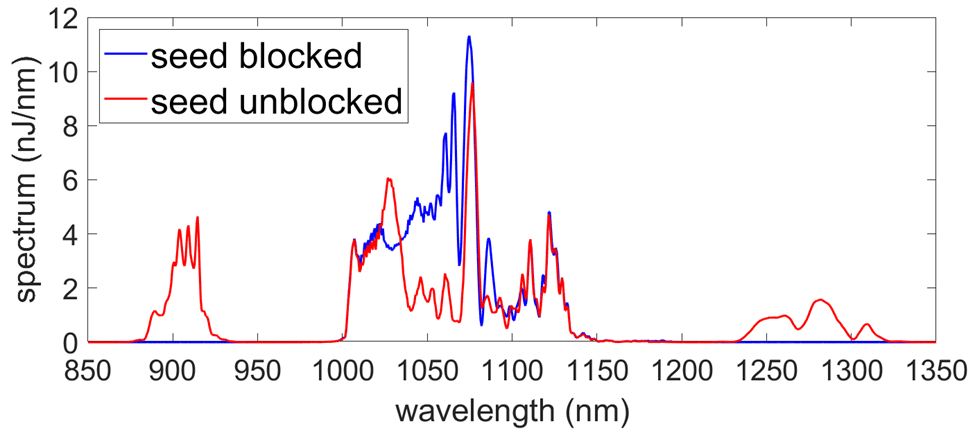Femtosecond optical parametric chirped-pulse amplification in birefringent step-index fiber
While optical fiber is convenient for many applications, generating short pulses outside of the typical gain bandwidth of rare-earth dopants commonly used in fiber amplifiers and oscillators is challenging. There are relatively few dopants that are compatible with the silica glass host, which leads to significant spectral gaps in which it is difficult to generate strong ultrashort pulses. It is sometimes possible to use nonlinear wavelength conversion to generate pulses in these spectral gaps, however. Parametric amplification conveniently generates two sidebands simultaneously, though to this point compressed pulse durations have been limited to ~200 fs and non-standard fiber waveguide geometries have been necessarily employed in order to achieve phase-matching. In this work, we demonstrate optical parametric chirped-pulse amplification in commercially available birefringent step-index optical fiber, delivering tens-of-nanojoule pulses compressible to 60-70 fs at 900 nm and 1270 nm. The key advances in this work were using birefringence rather than dispersion engineering in order to achieve phase-matching, and furthermore realizing that pumping the system with an extremely broadband pulse (from a gain-managed nonlinear amplifier) would allow the generation of energetic pulses compressible to very short duration. In addition, as the amplifier works with chirped pulses, we believe that the pulse energy may further be increased by chirping the pulses to longer duration and/or by employing large-mode area fiber for parametric amplification. We plan to use this system for hyperspectral degenerate and non-degenerate two-photon excitation fluorescence microscopy in the near future, enabling studies of complex biological processes in vivo.
